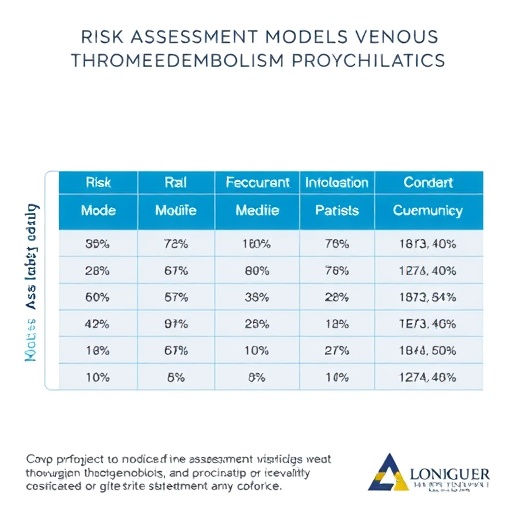Bottom Line: In preclinical studies, tumors that consitutively expressed the protein indoleamine 2,3-dioxygenase (IDO1) responded to the cyclooxygenase-2 (COX-2) inhibitor celecoxib (Celebrex) and had improved infiltration of certain subsets of T cells, making them more likely to respond to anti-PD1 therapies.
Journal in Which the Study was Published: Cancer Immunology Research, a journal of the American Association for Cancer Research.
Author: Benoit J. Van den Eynde, MD, PhD, professor at Ludwig Institute for Cancer Research at de Duve Institute and Université catholique de Louvain in Brussels, Belgium.
Background: "A key challenge in cancer immunotherapy is to understand why some patients respond to immunotherapy but many others do not," said Van den Eynde. "If we understand why, we can then select and treat only those patients who will benefit from the treatment, but most importantly, we can devise strategies to make immunotherapy work in those who are not currently responding."
Many tumors use IDO1 as a shield to protect themselves from immune attack, explained Van den Eynde. Some of them start building and raising their shields when they are being attacked by T cells, which is called adaptive resistance. In such tumors, IDO1 expression is associated with inflammation and T-cell infiltration.
However, some tumors produce IDO1 constitutively (continuously) and have their shields ready and raised before any immune attack. Such tumors are fully protected and can prevent T-cell attack by disabling the T cells right away. "This is what we call intrinsic resistance and may explain why some tumors are 'cold,' meaning, not infiltrated by T cells," Van den Eynde said.
"We wanted to understand the molecular mechanisms that make some tumors express IDO1 constitutively," he added.
How the Study Was Conducted and Results: Using two human melanoma cell lines, Van den Eynde and colleagues first demonstrated that COX-2 and its product, prostaglandin E2 (PGE2), caused the constitutive expression of IDO1 by utilizing the MAPK, PKC, and PI3K cell-signaling pathways. These results held true in other human tumor cell lines as well, including lung, ovarian, and head and neck cancer cell lines. "These data provide evidence that COX-2 drives tumor-induced immunosuppression through constitutive expression of IDO1," Van den Eynde noted.
Next, they showed that immunodeficient mice reconstituted with human lymphocytes and bearing human ovarian tumor xenografts with constitutive IDO1 expression responded to celecoxib as well as the IDO1 inhibitor, epacadostat. "The outcomes we observed with COX-2 inhibitors and IDO1 inhibitors were identical, which came as a surprise," Van den Eynde said. "It is always very useful to have two compounds acting on the same pathway with two different modes of action: In case tumors start resisting one compound, they may still be sensitive to the other."
By mining the transcriptomics data of 1,041 different human tumor cell lines from the Broad Institute, the researchers found a correlation between IDO1 expression and activation of the COX-2/PGE2 axis in several cancer types, including stomach, pancreatic, liver, and lung cancers, and sarcoma.
Author Comment: "Our studies provide a clear rationale to test, in the clinics, combinations of anti-PD1 immunotherapy and COX-2 inhibitors," Van den Eynde said. "This should be straightforward given the fact that both anti-PD1 and COX-2 inhibitors are already approved for clinical use in different contexts." Initial analysis by the team indicated that about 10 to 50 percent of human tumors express IDO1 constitutively, depending on tumor type.
###
Funding & Disclosures: This study was funded by Ludwig Institute for Cancer Research, Walloon Excellence in Life Sciences and Biotechnology (WELBIO, Belgium), FNRS-Télévie (Belgium), Foundation Against Cancer (Belgium), de Duve Institute and Université catholique de Louvain. Van den Eynde has ownership interest in iTeos Therapeutics, a biotechnology company developing IDO1 inhibitors.
To interview Benoit J. Van den Eynde, contact Julia Gunther at [email protected] or 215-446-6896.
Follow us: Cancer Research Catalyst http://blog.aacr.org; Twitter @AACR; and Facebook http://www.facebook.com/aacr.org
About the American Association for Cancer Research
Founded in 1907, the American Association for Cancer Research (AACR) is the world's first and largest professional organization dedicated to advancing cancer research and its mission to prevent and cure cancer. AACR membership includes more than 37,000 laboratory, translational, and clinical researchers; population scientists; other health care professionals; and patient advocates residing in 108 countries. The AACR marshals the full spectrum of expertise of the cancer community to accelerate progress in the prevention, biology, diagnosis, and treatment of cancer by annually convening more than 30 conferences and educational workshops, the largest of which is the AACR Annual Meeting with nearly 19,500 attendees. In addition, the AACR publishes eight prestigious, peer-reviewed scientific journals and a magazine for cancer survivors, patients, and their caregivers. The AACR funds meritorious research directly as well as in cooperation with numerous cancer organizations. As the Scientific Partner of Stand Up To Cancer, the AACR provides expert peer review, grants administration, and scientific oversight of team science and individual investigator grants in cancer research that have the potential for near-term patient benefit. The AACR actively communicates with legislators and other policymakers about the value of cancer research and related biomedical science in saving lives from cancer. For more information about the AACR, visit http://www.AACR.org.
Media Contact
Lauren Riley
[email protected]
215-446-7155
@aacr




